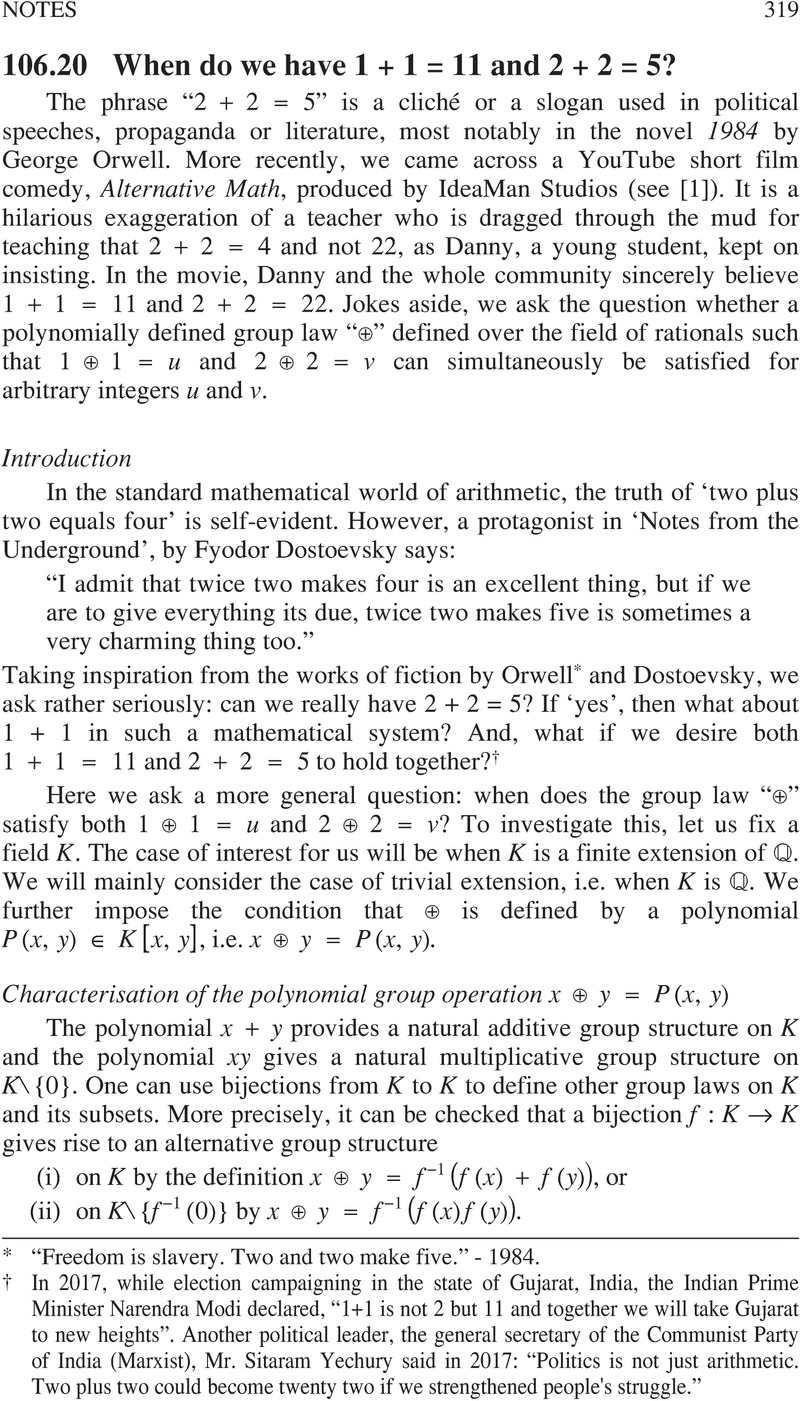No CrossRef data available.
Article contents
106.20 When do we have 1 + 1 = 11 and 2 + 2 = 5?
Published online by Cambridge University Press: 22 June 2022
Abstract
An abstract is not available for this content so a preview has been provided. Please use the Get access link above for information on how to access this content.

- Type
- Notes
- Information
- Copyright
- © The Authors, 2022 Published by Cambridge University Press on behalf of The Mathematical Association
References
Alternative math | short film, https://youtu.be/Zh3Yz3PiXZw, uploaded on Sept. 19, 2017.Google Scholar
Brawley, Joel V, Gao, Shuhong and Mills, Donald, Associative rational functions in two variables. In Finite Fields and Applications, Springer (2001) pp. 43-56Google Scholar





